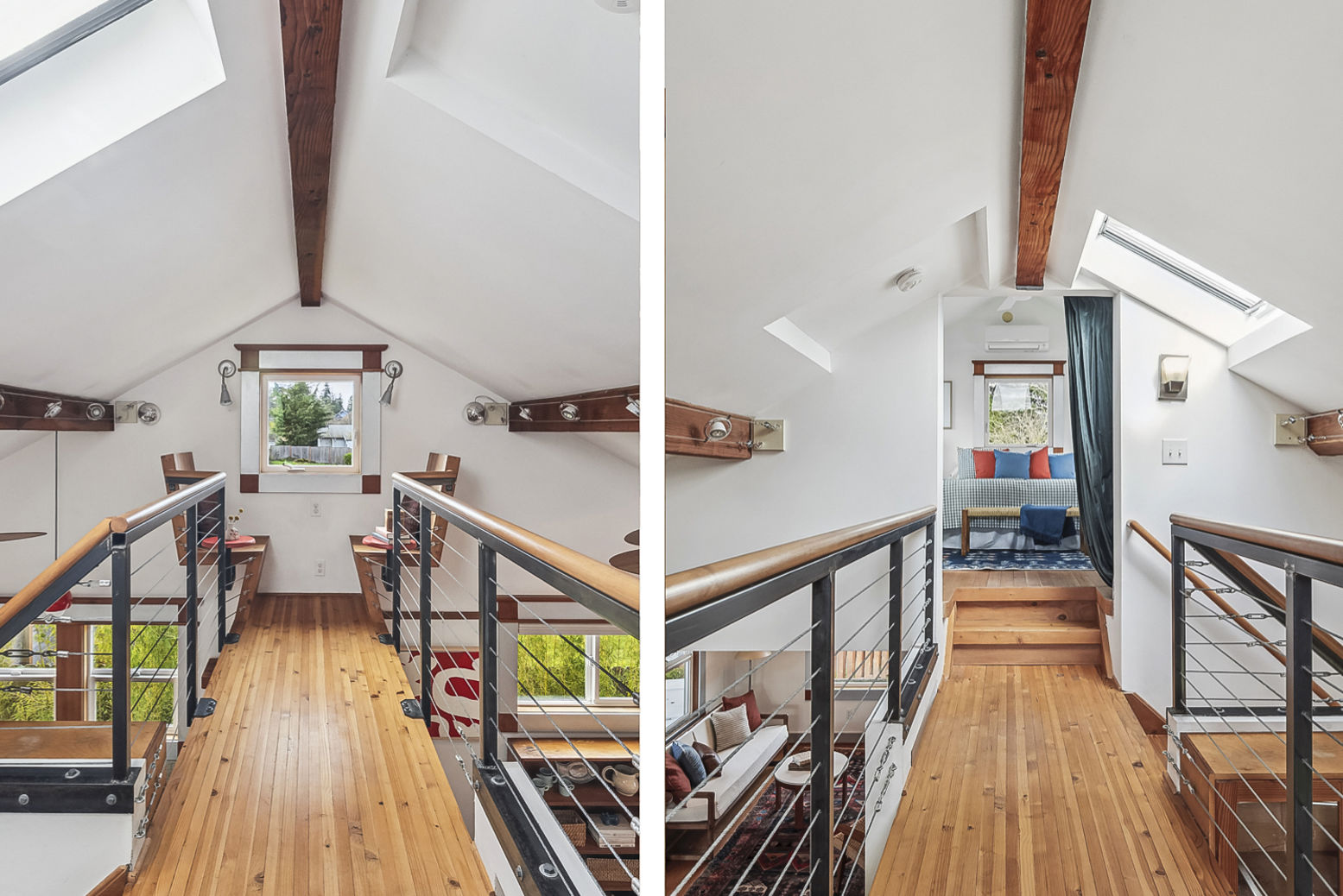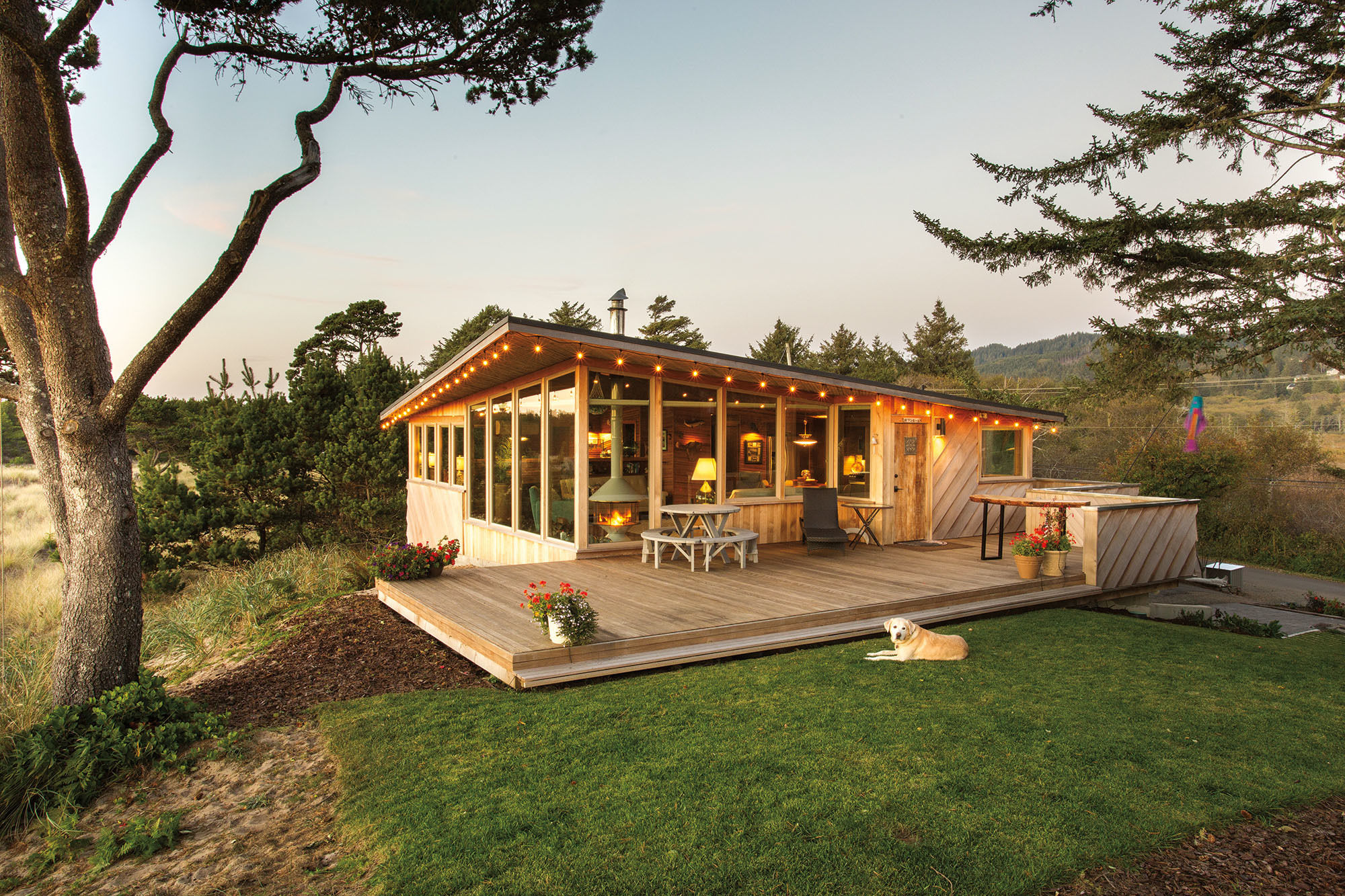
A Historic Midcentury-Modern Beach House Marries Old and New
The Van Evera Bailey beach house had been in Mike Morse’s family for half a century. He’d spent summers at the small, handsome oceanfront home, just north of Neskowin, since he was in college. His parents bought it in the mid-’60s from Portland architect Bailey himself, who designed it as an artist’s studio and retreat—a sand cabin crafted to look half-buried in the dunes. Morse would inherit the house, spending weekends there with his wife, Tari, and four children, and, decades on, their five grandchildren, each generation sitting at the round, multihued cedar table in the dining area or watching the fireworks boom over big Fourth of July cookouts with beachside neighbors. And then, in February 2017, a big storm hit, the east winds funneling over the Cascade Range and slamming Neskowin like a bulls-eye, and the roof of the Van Evera Bailey beach house blew right off.
“It laid open for three weeks. You could see daylight between the [two-by-sixes] on the ceiling. It was devastating,” remembers Morse, now 74. “All the mementos, the books and board games, were ruined. The table was badly damaged. The whole house was totally soaked.” The driest spot in the house? A drawer in Bailey’s original cedar drafting table—with a 1955 issue of American Home magazine tucked inside, which just happens to include a feature story on the Bailey beach house.
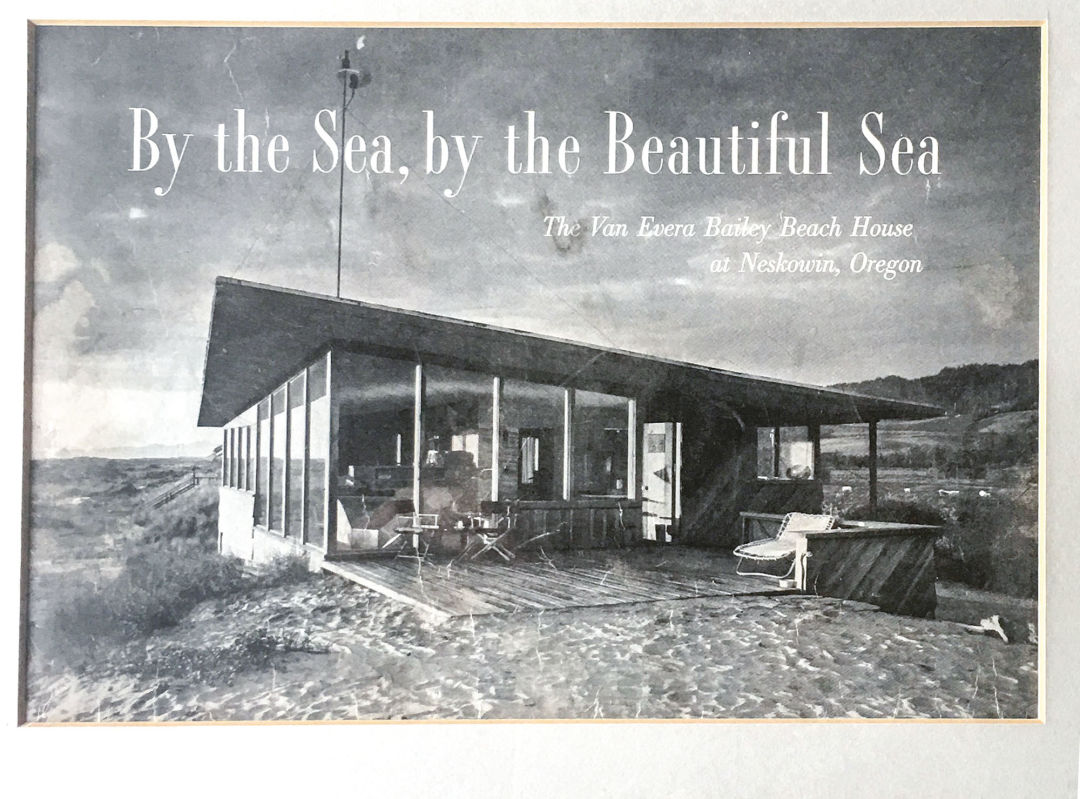
The opening pages of the 1955 American Home article on this Van Evera Bailey–designed beach house
The Morses vowed to restore the home. And they had to do it before rot set in.
Portland-born Bailey was a midcentury modernist, like Northwest architecture giants John Yeon and Pietro Belluschi. Bailey’s Northwest Regional style is catnip to today’s home-seekers, his designs rife with warm wood ceilings, overhanging rooflines, and floor-to-ceiling windows—all in service of bringing the outdoors inside (and vice versa). A preservation society devoted a 2015 tour to his Portland-area homes, from the dramatic vertical cedar siding and enviable Mount Hood views of his 1940s-era Sinclair House on Council Crest (rehabbed by InSitu in 2014) to a Lake Oswego home inspired by the curvy lines of a cruise ship. He also helped innovate the stilts that keep posh homes from sliding down the West Hills. He’s kind of a big deal. (Fun fact: he designed miniature golf courses in New Zealand, too.)
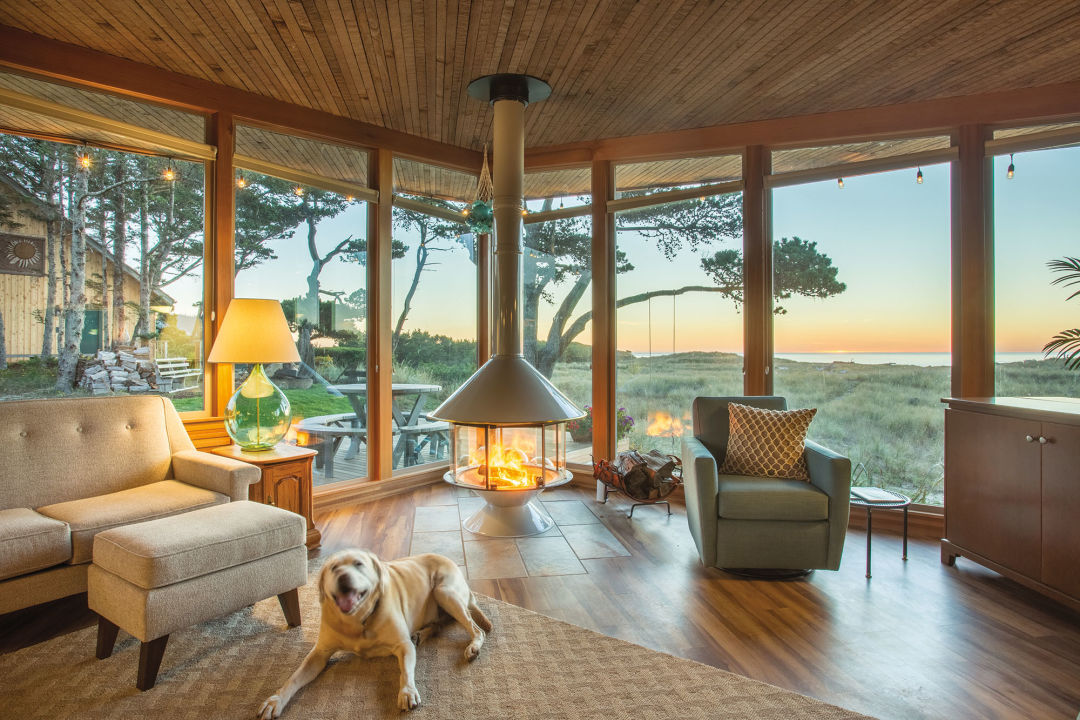
The refreshed living room, with the Morses’ dog, Bogey
Image: Caitlin Murray
That 1955 Home article lovingly details the beach house’s Bailey trademarks: the unique, jutting prow of a roof formed from laminated Doug fir two-by-sixes originally covered in tar paper—more like an old-timey warehouse than a residential home—horizontal scraps of cedar on the walls “giving the effect of tweed fabric,” and clever elements designed to lure the eye always oceanward, from the wide windows to flooring laid on a diagonal to point toward the sea. “Instead of stretching the house out to embrace the view, they ... made the most of the view through depth,” crowed the American Home writer, who noted that the snug, 30-by-30-foot two-bedroom cabin was an example of what happens when an architect “need not compromise with a client on matters of taste and conviction.”
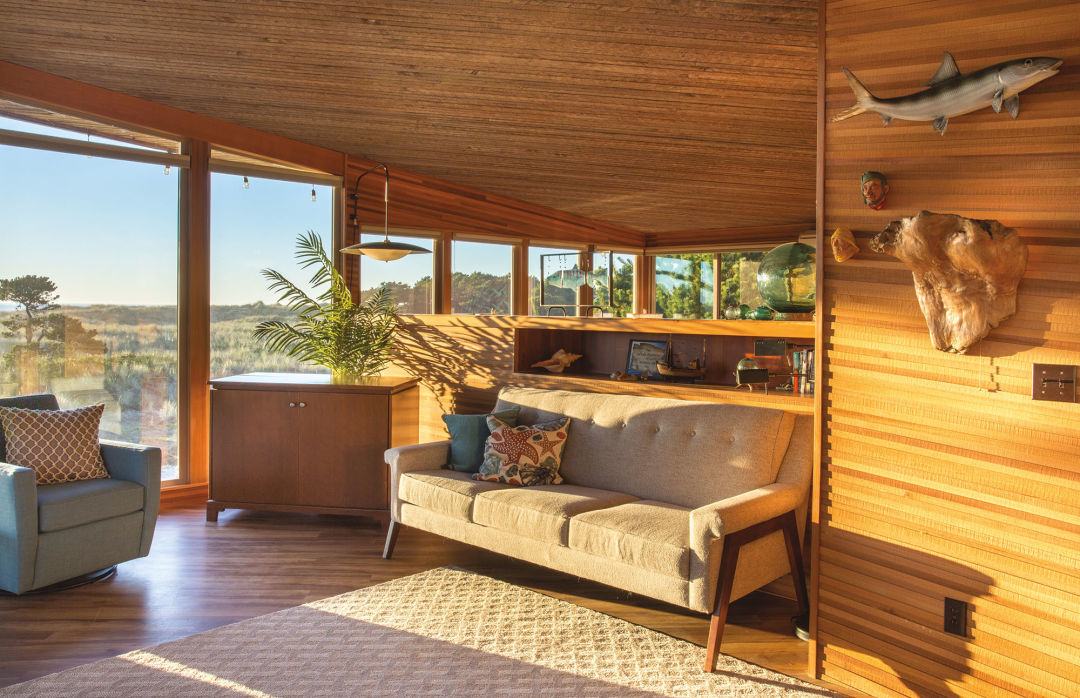
A distinctive half wall separating the living room from the master bedroom
Image: Caitlin Murray
Oddly enough, Morse was already scheming with Portland architect Webster Wilson to restore the beach house before it was damaged. Decades of benign neglect had taken a toll, rotting boards to moldy, “stinky” carpet on the unfinished lower level. “My dad was never one for finishing projects. He was either salmon fishing, crabbing, or playing golf,” admits Morse, who worked at his family’s Morse Bros construction materials company for most of his life. After the deluge, they fast-tracked the project, with the dual goal of restoring the original Bailey design and completing essential updates, from modernizing the kitchen to ditching the home’s odd outdoor stairwell, which accessed the lower level.
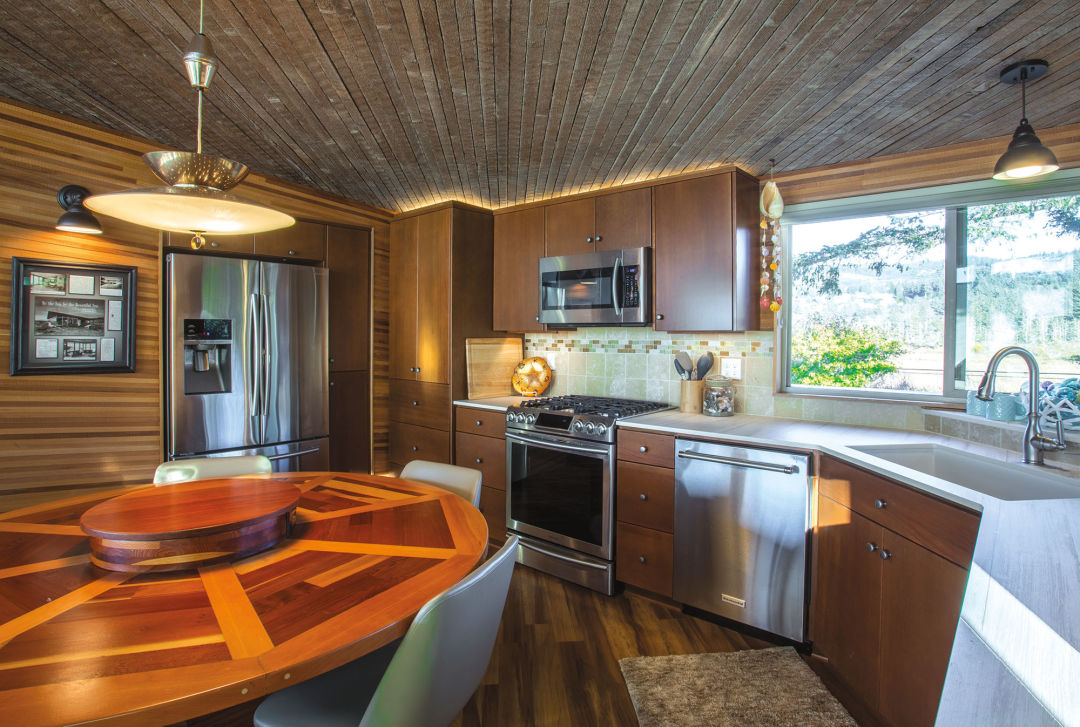
The kitchen with restored Bailey table
Image: Caitlin Murray
“It was a real puzzle, how to keep the upper floor as a strict preservation project but add modern amenities,” says Wilson, noting Bailey was admired for designs that work in concert with their landscapes. “He was a master at that. And in this house he captures what it is to connect to the beach.” His crew, aided by Morse himself, reconnected those elements: refurbishing the original Doug fir roof beams and painstakingly fitting bits of the original skinny strips of cedar on some of the walls. They smuggled a new, enclosed stairwell underneath the existing roofline, stealthily extended one of the original exterior walls, and excavated space for a garage/workroom for Morse underneath the deck. The lower level now hides a light-filled bathroom, bunkroom, and luxe media room (no stink).
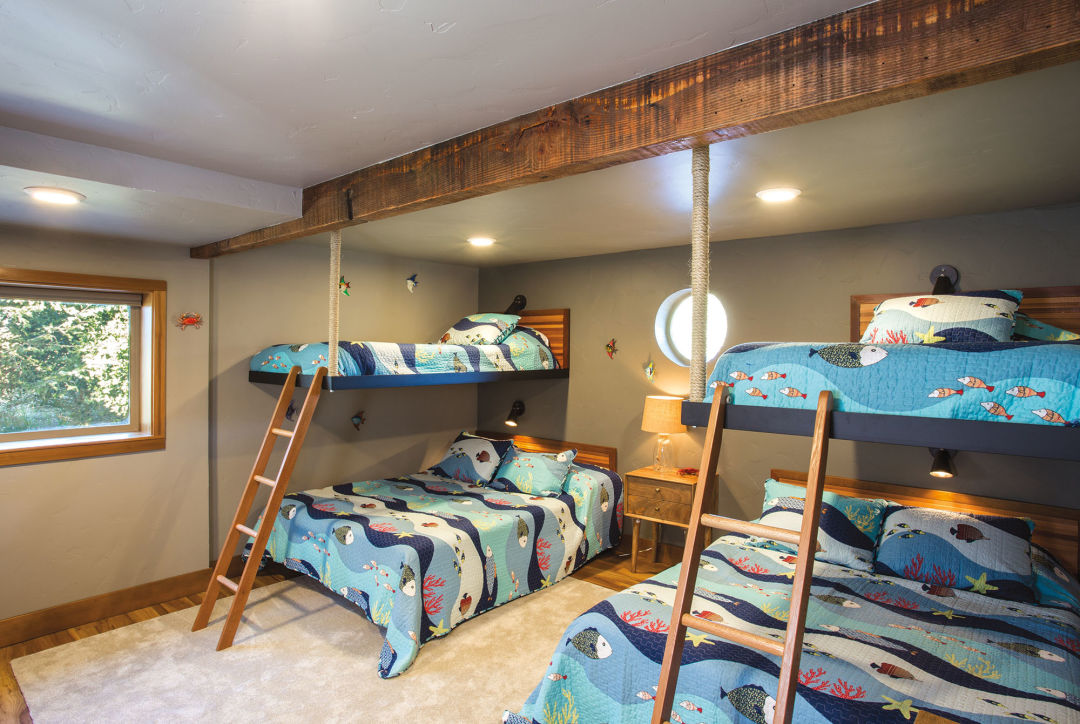
A new bunkroom downstairs
Image: Caitlin Murray
Tari Morse handpicked the house’s cozy midcentury furnishings, while Mike proudly points out his own handiwork: a striped cedar headboard in the second bedroom, a living room coffee table cut from an alder stump he found on the beach. He even enlisted a Corvallis furniture restorer to repair the big, round table, which Bailey also originally built, and it’s back in the dining nook. (He gifted the architect’s old drafting table to Wilson.) “I absolutely love it. There isn’t anything I would change,” says Mike Morse of the renovation, though he admits he was hoping for a slightly different wood grain finish on the kitchen cabinets. The remodel began in June 2017. The house was ready in time for 2018’s Fourth of July party.
“A lot of people would have just torn [the house] down because there was so much damage to it. I’m proud we were able to save it and update it,” says Wilson. “Looking at those original magazine photos and seeing how [the house] now looks like a new version of the old is just great. A lot of remodels wreck the original, but this is a place for generations to stay.”
